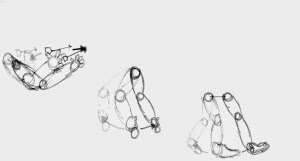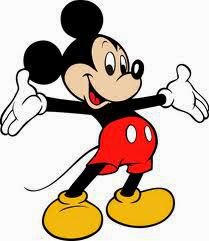The Gorillaz
The Gorillaz were formed in 1998, by Damon Albarn and Jamie Hewlett. Jamie Hewlett was the original animator. Jamie studied at North Brook college. By 1992 Hewlett had become a major creator in the comic industry. At the beginning the Gorillaz started as a 2-D band. However as technology advanced they were able to animate their characters in 3-D. Gorillaz are the most well known animated band and have been put in the Guinness book of world records as the most successful virtual band. An example of “secondary action” where a ghosted image repeats the actions of the main body. This is also an example if slow in and slow out. This scene exaggerates the time he is in the air compared to the time he is on the ground while he s running. ( character slows down in mid-air and speeds up when stepping on the ground. Reviews about the Gorillaz are "It's always exciting to see a new Gorillaz video" and "Always intriguing to watch a Gorillaz song".
Hanna Barbera
Hanna – Barbera Productions was founded in 1957 by William Hannah and Joseph Barbera. William Hanna was born in New Mexico and Joseph Barbera was born in New York. The two first paired whilst working at the Metro Goldwyn Mayer cartoon centre in 1939.
Their first project was called ‘Puss Gets the Boot’ in 1940. Their first major success was the Huckleberry Hound show in 1958.
The company used many limited animation techniques such as ‘ring around the collar.’ This allowed them to produce cartoons on a low-budget, quickly enough to meet the television schedule. Ring around the collar is a low budget animation technique which shows the character wearing a simple item of clothing around their neck such as a tie or scarf. They were influenced by older animations – such as those by Walt Disney. E.G, Dumbo, Snow White, Pinocchio.
Walt Disney
Walter Elias “Walt” Disney (December 5, 1901 – December 15, 1966) was an American cartoonist, filmmaker, voice actor and many more. He is a ‘cultural icon’. He influenced many and contributed to entertainment during the 20th century. Walt Disney was influenced by artist and educator, Louis Grell, as he was taught by him at The Chicago Academy of Fine Art. He also met a cartoonist named Ubbe lwerks, who also inspired him. Walt Disney’s animations have similar styles. The drawings and sketches are similar to each other. For example, the facial expressions have a lot of detail and the body structure of all the characters is realistic. Some techniques that Walk Disney used are as follows:
The dreamer: Spins fantasies, wishes, outrageous hunches, bold and absurd ideas without limits or judgment.
Realist: Imagineers the dreamer’s ideas into something realistic and feasible. Working out ideas into meaningful orders.
The critic: reviews all the ideas and punch holes in them by playing the devil’s advocate. If things make sense and how it looks to a customer.
The purpose of Walt Disney’s animation was too entertain audiences. The main audience was young people.Most animations are used for positive purposes. All of Walt Disney’s stories had morals and that is why these animations would be aimed at younger audiences.
some reviews:
The Lion King- Rotten Tomatoes – “Emotionally stirring, richly drawn, and beautifully animated, The Lion King stands tall within Disney's pantheon of classic family films.”
Beauty and the Beast – Roger Ebert - “Beauty and the Beast reaches back to an older and healthier Hollywood tradition in which the best writers, musicians and filmmakers are gathered for a project on the assumption that a family audience deserves great entertainment.”
The 12 Principles of Animation were introduced by Disney animators, Ollie Johnston and Frank Thomas in 1981. They used the basic laws of physics and created them.
Yellow Submarine
The Yellow Submarine’s animation was directed by Bob Balser and Jack Stokes.
Jack Stokes, born on the 2nd of April 1920, was an English animator and animation director.
He trained at the South end College of Art. By the early 60s he had his own studio, called Stokes Cartoons where he produced work for cinema and television. The most famous example of Jack Stokes work was the animated film, The Yellow Submarine. In this animation they used Rotoscoping. Rotoscoping is when animators draw over footage frame by frame, it is usually used in live action and animated films. Live action films were taken and projected onto a frosted glass panel, which animators would draw over to add their own style of drawing and accentuate movements and expressions. The Beatles created the animation in attempt to finish a contract with United Artists, in which they had to create three separate films. The band was uninterested in creating more films, especially after the lack of appeal to their TV special, Magical Mystery Tour. The animation influences The Simpsons, South Park, Toy Story and Shrek as they contain many references to the film. For example: Lisa's dentist dream sequence turns into a missing scene from the Yellow Submarine film. "Look, it's Lisa in the sky", "No diamonds though."























.jpeg)

